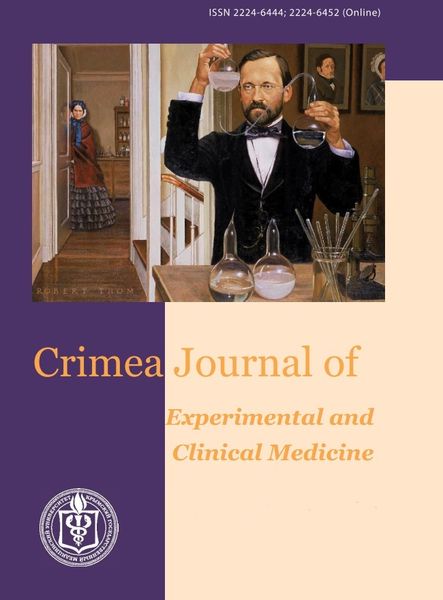MMP9 is deeply involved in invasion, metastasis and angiogenesis of various tumors, and can also affect the tumor microenvironment. The aim of this study was to analyze the MMP9 levels in tissues with independent and com- bined growth (MPT): B16/F10 melanoma and Lewis lung carcinoma. Primary immunodeficiency presented in a model of Balb/c Nude mice was chosen as a comorbid pathology. The study included 24 females divided into groups (n=6 each): 1 – intact animals, 2 – animals with B16/F10 melanoma, 3 – animals with Lewis lung carcinoma (LLC), 4 - ani- mals with a combination of B16/F10 and LLC - multiple primary malignancies (MPMs). Levels of MMP9 were measured by ELISA in homogenates of tumor and perifocal tissues in all animals. In animals with MPT, levels of MMP9 in B16/ F10 were 3.9 times higher than in LLC, and the levels in B16/F10 perifocal tissues were 1.9 times higher than in LLC perifocal tissues. MMP9 in non-cancer tissues in animals with MPT 2.8 times exceeded the levels in intact animals. In animals with MPT, MMP9 in tumor samples positively correlated with the primary node volumes. Whatever the level of MMP9 in the tumor and perifocal tissues, it is clearly directly involved in cancer development.
B16/F10 melanoma, Lewis lung carcinoma, multiple primary tumors, MMP9, experiment
1. Apte S. S., Parks W. C. Metalloproteinases: a parade of functions in matrix biology and an outlook for the future. Matrix Biol. 2015;44-46:1-6.
2. Li Y., He J., Wang F., Wang X., Yang F., Zhao C., Feng C., Li T. Role of MMP-9 in epithelial-mesenchymal transition of thyroid cancer. World journal of surgical oncology. 2020;18(1):181. doihttps://doi.org/10.1186/s12957-020- 01958-w.
3. Radisky E. S., Radisky D. C. Matrix metalloproteinase-induced epithelial-mesenchymal transition in breast cancer. J Mammary Gland Biol Neoplasia. 2010;15:201-212. doihttps://doi.org/10.1007/s10911-010- 9177-x.
4. Santos M. C., de Souza A. P., Gerlach R. F., Trevilatto P. C., Scarel-Caminaga R. M., Line S. R. Inhibition of human pulpal gelatinases (MMP-2 and MMP- 9) by zinc oxide cements. J Oral Rehabil. 2010;31:660- 664. doihttps://doi.org/10.1111/j.1365-2842.2004.01297-x.
5. Reinhard S. M., Razak K., Ethell I. M. A delicate balance: role of MMP-9 in brain development and pathophysiology of neurodevelopmental disorders. Front Cell Neurosci. 2015;9:280. doihttps://doi.org/10.3389/fncel.2015.00280.
6. Zariffard M. R., Anastos K., French A. L., Munyazesa E., Cohen M., Landay A. L., Spear G. T. Cleavage/alteration of interleukin-8 by matrix metalloproteinase-9 in the female lower genital tract. PLoS One. 2015;10:e0116911. doihttps://doi.org/10.1371/journal. pone.0116911.
7. Hsu C. C., Huang S. F., Wang J. S., Chu W. K., Nien J. E., Chen W. S., Chow S. E. Interplay of N-cadherin and matrix metalloproteinase 9 enhances human nasopharyngeal carcinoma cell invasion. BMC Cancer. 2016;16:800. doihttps://doi.org/10.1186/s12885-016-2846-4.
8. Pujada A., Walter L., Patel A., Bui T. A., Zhang Z., Zhang Y., Denning T. L., Garg P. Matrix metalloproteinase MMP-9 maintains epithelial barrier function and preserves mucosal lining in colitis associated cancer. Oncotarget. 2017;8:94650-94665. doihttps://doi.org/10.18632/oncotarget.21841.
9. Pego E. R., Fernbndez I., N'sez M. J. Molecular basis of the effect of MMP-9 on the prostate bone metastasis: a review. Urol Oncol. 2018;36:S1078143918300851. doihttps://doi.org/10.1016/j.urolonc.2018.03.009.
10. Leifler K. S., Svensson S., Abrahamsson A., Bendrik C., Robertson J., Gauldie J., Olsson A. K., Dabrosin C. Inflammation induced by MMP-9 enhances tumor regression of experimental breast cancer. Journal of immunology. 2013;190(8):4420-4430. doi:10.4049/ jimmunol.1202610.
11. Coussens L. M., Tinkle C. L., Hanahan D., Werb Z. MMP-9 supplied by bone marrow-derived cells contributes to skin carcinogenesis. Cell. 2000;103(3):481- 490. doihttps://doi.org/10.1016/s0092-8674(00)00139-2.
12. Kessenbrock K., Plaks V., Werb Z. Matrix metalloproteinases: regulators of the tumor microenvironment. Cell. 2010:141(1):52-67. doihttps://doi.org/10.1016/j. cell.2010.03.015.
13. Kit O. I., Franciyanc E. M., Nikipelova E. A., Komarova E. F., Kozlova L. S., Tavaryan I. S., Averkin M. A., Cheryarina N. D. Izmeneniya markerov proliferacii, neoangiogeneza i sistemy aktivacii plazminogena v tkani raka pryamoy kishki. Eksperimental'naya i klinicheskaya gastroenterologiya. 2015;2(114):40-45.
14. Kit O. I., Franciyanc E. M., Bandovkina V. A., Shatova Yu. S., Komarova E. F., Vereskunova M. I., Kuchkina L. P. Uroven' polovyh gormonov i prolaktina v tkani zlokachestvennyh opuholey molochnoy zhelezy u bol'nyh raznogo vozrasta. Fundamental'nye issledovaniya. 2013;7-3:560-564.
15. Decock J., Thirkettle S., Wagstaff L., Edwards D. R. Matrix metalloproteinases: protective roles in cancer. Journal of cellular and molecular medicine. 2011;15(6):1254-1265. doihttps://doi.org/10.1111/j.1582- 4934.2011.01302.x.
16. Hamano Y., Zeisberg M., Sugimoto H., Lively J. C., Maeshima Y., Yang C., Hynes R. O., Werb Z., Sudhakar A., Kalluri R. Physiological levels of tumstatin, a fragment of collagen IV alpha3 chain, are generated by MMP-9 proteolysis and suppress angiogenesis via alphaV beta3 integrin. Cancer cell. 2003;3(6):589-601. doi:10.1016/ s1535-6108(03)00133-8.
17. Michopoulou A., Montmasson M., Garnier C., Lambert E., Dayan G., Rousselle P. A novel mechanism in wound healing: Laminin 332 drives MMP9/14 activity by recruiting syndecan-1 and CD44. Matrix Biol. 2020;94:1-17. doihttps://doi.org/10.1016/j.matbio.2020.06.004.
18. Mora Huertas A. C., Schmelzer C. E., Hoehenwarter W., Heyroth F., Heinz A. Molecular-level insights into aging processes of skin elastin. Biochimie. 2016;128-129:163-173. doi:10.1016/ j.biochi.2016.08.010.





